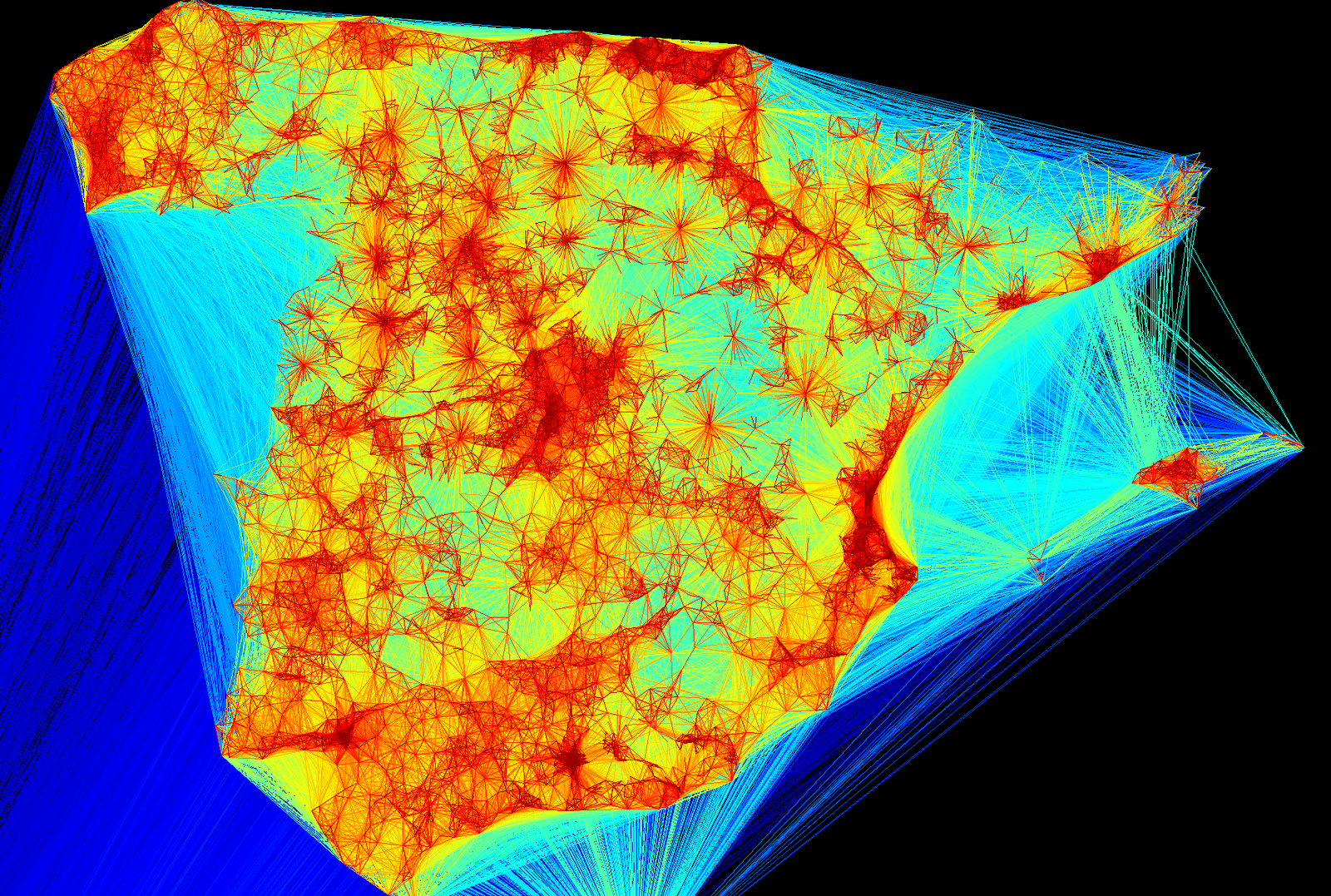Thanks to advances in sensing, networking, and data management, our society is producing digital information at an astonishing rate. According to one estimate, in 2010 alone we will generate 1,200 exabytes—60 million times the content of the Library of Congress. Within this deluge of data lies a wealth of valuable information on how we conduct our businesses, governments, and personal lives. To put the information to good use, we must find ways to explore, relate, and communicate the data meaningfully.
The goal of visualization is to aid our understanding of data by leveraging the human visual system’s highly tuned ability to see patterns, spot trends, and identify outliers. Well-designed visual representations can replace cognitive calculations with simple perceptual inferences and improve comprehension, memory, and decision making. By making data more accessible and appealing, visual representations may also help engage more diverse audiences in exploration and analysis. The challenge is to create effective and engaging visualizations that are appropriate to the data.
Creating a visualization requires a number of nuanced judgments. One must determine which questions to ask, identify the appropriate data, and select effective visual encodings to map data values to graphical features such as position, size, shape, and color. The challenge is that for any given data set the number of visual encodings—and thus the space of possible visualization designs—is extremely large. To guide this process, computer scientists, psychologists, and statisticians have studied how well different encodings facilitate the comprehension of data types such as numbers, categories, and networks. For example, graphical perception experiments find that spatial position (as in a scatter plot or bar chart) leads to the most accurate decoding of numerical data and is generally preferable to visual variables such as angle, one-dimensional length, two-dimensional area, three-dimensional volume, and color saturation. Thus, it should be no surprise that the most common data graphics, including bar charts, line charts, and scatter plots, use position encodings. Our understanding of graphical perception remains incomplete, however, and must appropriately be balanced with interaction design and aesthetics.
This article provides a brief tour through the “visualization zoo,” showcasing techniques for visualizing and interacting with diverse data sets. In many situations, simple data graphics will not only suffice, they may also be preferable. Here we focus on a few of the more sophisticated and unusual techniques that deal with complex data sets. After all, you don’t go to the zoo to see Chihuahuas and raccoons; you go to admire the majestic polar bear, the graceful zebra, and the terrifying Sumatran tiger. Analogously, we cover some of the more exotic (but practically useful!) forms of visual data representation, starting with one of the most common, time-series data; continuing on to statistical data and maps; and then completing the tour with hierarchies and networks. Along the way, bear in mind that all visualizations share a common “DNA”—a set of mappings between data properties and visual attributes such as position, size, shape, and color—and that customized species of visualization might always be constructed by varying these encodings.
Most of the visualizations shown here are accompanied by interactive examples. The live examples were created using Protovis, an open source language for Web-based data visualization. To learn more about how a visualization was made (or to copy and paste it for your own use), simply “View Source” on the page. All example source code is released into the public domain and has no restrictions on reuse or modification. Note, however, that these examples will work only on a modern, standards-compliant browser supporting SVG (scalable vector graphics ). Supported browsers include recent versions of Firefox, Safari, Chrome, and Opera. Unfortunately, Internet Explorer 8 and earlier versions do not support SVG and so cannot be used to view the interactive examples.
….
Some what dated but still a useful overview of visualization.

